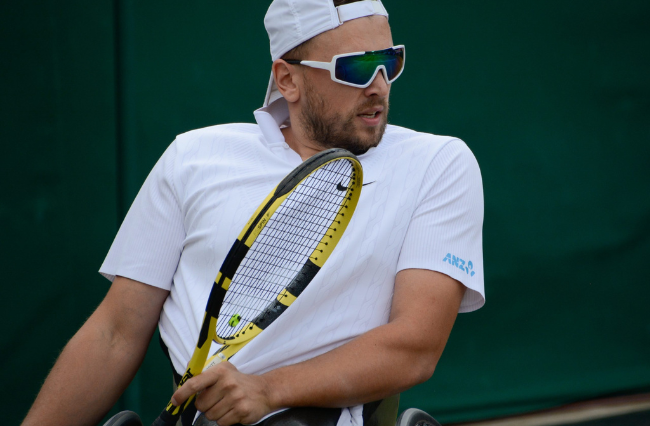Eleven stages down, ten to go. This sums up the grueling test that is the Tour de France. Having already raced nearly 2000 kilometers, the riders are only half way done.
And that was the easy half.
Australia’s Cadel Evans looks as strong as he ever has in third place, but the biggest story as the race moves into the Pyrenees Mountains has been the crashes that have marred the race.
Cycling is an inherently dangerous sport, even more so when the riders hurtle down hills and around bends at almost 100 km/h.
Stage 9 brought several riders unstuck, including pre-race favorite Jurgen Van Den Broeck of Belgium and Kazakhstan’s Alexandre Vinokourov.
Vinokourov ‘escaped’ with a fractured right femur, putting the 37 year old’s career in jeopardy while Van Den Broeck suffered a fractured Scapula (shoulder blade), three broken ribs and a collapsed lung.
Perhaps even more shocking was the incident that followed later in the same day. A breakaway of five riders was leading the race, including current yellow jersey wearer, Frenchman Thomas Voeckler.
A TV car following the race had requested that it be allowed to pass the riders in order to get to the finish before them, but their request was denied by race officials.
The car, however, ignored the directive from race officials and sped up alongside the riders without realising a tree was close to the road.
The driver swerved to avoid it, and in the process smashed into the Vacansoleil team’s Johnny Hoogerland and Team Sky’s Juan Antonio Flecha.
Hoogerland was entangled in a barbed wire fence off to the side of the road, suffering lacerations that required 36 stitches the next day.
Flecha hit the road at around 80 km/h and skidded along the bitumen before getting up and riding through the pain.
Both riders continued on and finished the stage, Hoogerland claimed the polka-dot jersey for the leader of the king of the mountains classification, and the TV car was excluded from the rest of the Tour.
Tour director Christian Prudhomme released a statement after the race saying: “I announced on Radio Tour, which is the channel everyone should be listening to, that all cars should pull to the side and give priority to the team cars.”
“They did not take that order into account… and caused the crash of both riders. This behavior is intolerable.” Prudhomme added
This however, cannot be the end of the matter. Things like this have happened before, and will happen again.
On stage 6 of this year’s race, a motorbike rider was thrown off the Tour after collecting and subsequently felling current Danish National Champion Nicki Sorensen.
The problem is, vehicles, be they motorbikes, cars or even trucks are essential to bike races running effectively.
198 riders contest the Tour de France in teams of nine, and if you got through grade three alright you’d hopefully realise this means there are 22 teams.
Every team has two cars carrying spare wheels, bikes, drinks, food and team officials.
This, along with the neutral service vehicles- that are not aligned to any team but provide support to anyone who needs it. The vehicles of the race referees, the motorbikes of the camera operators and officials who pass time gaps on to the competitors (via comedically large yellow chalkboard) make for a lot of traffic on the roads.
It isn’t as simple as saying the teams can only have one car or that there is no need for the neutral service vehicles when the team cars have all the necessary equipment.
If there is a breakaway that goes ten minutes up the road and a rider crashes and damages his bike, if the team only has one car it would most likely be back in the peloton, meaning the rider would have to wait all of that ten minutes they had built up just to get a new bike.
The neutral service vehicles are intrinsic to the race, especially over the mountain where the race splits up into bunches.
There can’t be enough team cars to cover all these, so the neutral service vehicles follow bunches ensuring if there is a flat tyre it can be replaced quickly for the affected rider.
The step that the race organisers took in banning the French TV vehicle is in the right direction, but it’s one step in a race to avoid legal action from the teams.
One possible solution could be that all TV cars only travel before or after the race, with considerable time gaps between themselves and the riders either side.
This could be patrolled by the race organisers who drive ahead of and behind the race as it is.
The number of camera motorbikes is limited already, and as the ability for the viewer to see everything that’s going on in the race is paramount. This should not be altered.
All drivers in the Tour should have to be trained however, to ensure that nothing like this ever happens again.
After the passing of Wouter Weylandts in this year’s Giro d’Italia, the crash that left Colombian rider Juan Mauricio Soler in a coma during this year’s Tour de Suisse and the freak death of Spain’s Xavier Tondo, the riders have endured enough for the year.
In a sport that is already dangerous enough, the riders shouldn’t have to fight for the road they ride on.
Joel Peterson is a first-year student in the Bachelor of Journalism (Sport) at La Trobe University. Follow him on Twitter @joelbpeterson








